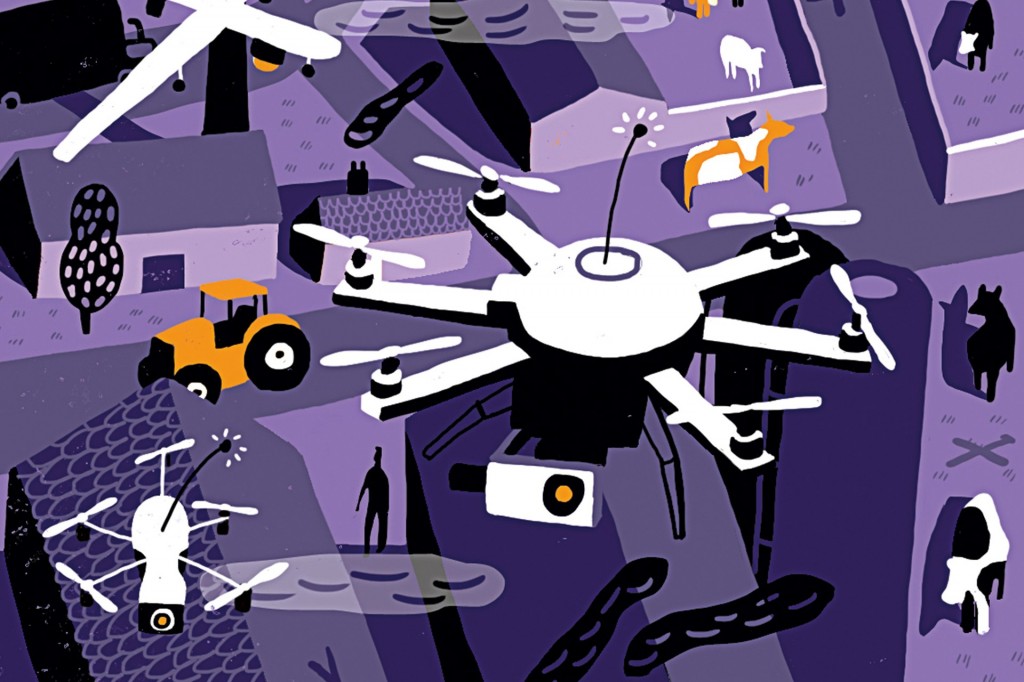 My latest article for the October 2014 issue of Wired magazine:
My latest article for the October 2014 issue of Wired magazine:
The agriculture industry is waging an international campaign to create a media blackout. In response to a series of investigations by animal-welfare groups that has resulted in criminal prosecutions and consumer outrage, the industry is promoting new “ag-gag” laws that make it illegal to photograph factory farms and slaughterhouses. About half a dozen US states currently have these laws, and now this censorship model is being adopted internationally.
So how should journalists respond to investigative methods and sources being criminalised? Just as the best response to governments banning books is to encourage reading them, the best response to banning photographs is to encourage more photography. It’s time for journalists to send in the drones.
As a reporter, I always want to see what’s hidden. When government documents are redacted, it naturally makes them more intriguing. And when factory farms introduce new laws to prohibit media exposure, it makes me want to see what it is that they are hiding.
That’s why, for my next investigation, I will be using aerial drone photography to investigate factory farms, particularly in states where these “ag-gag” laws are being debated. I’m not the only one who is curious: my Kickstarter to finance the project was funded by nearly 500 supporters in just five days, and the response was so overwhelming that the project has been expanded.
“Drones are cheap, simple and potential game changers for newsrooms,” the Columbia Journalism Review recently noted in a cover story. In the hands of journalists, drones are already being used to document mass protests, wildlife, oil spills, war-torn landscapes and natural disasters.
In my case, drones will probably not be able to document all of the animal cruelty the agriculture industry is trying to hide. However, they will be able to reveal pollution and environmental destruction. Photographer Mishka Henner used satellites to create startling images of cattle-feedlot pollution (see WIRED 05.14). If that is possible from space, what else would be possible with a drone?
The American Farm Bureau has already spoken out against drone photography, citing privacy concerns. But it does not invade anyone’s privacy to photograph a landscape safely from the air. By this reasoning, should factory farms also be censored from Google Earth?
More importantly, the agriculture industry’s “privacy” does not trump the rights of consumers to know how their food is produced. It’s in the public interest to see these images, and make informed decisions. As governments rapidly expand their use of drones for indiscriminate surveillance, it’s time journalists used the same technology for the public good.
Journalists in the US are eager to embrace this technology. A media survey by the National Press Photographers Association showed overwhelming support within the industry: 86 per cent of journalists said drone photography is a First Amendment right, and more than 70 per cent said drones would be a useful tool in their newsroom.
What is stopping them? More than half of respondents said they were concerned about violating state or federal regulations. The Federal Aviation Association has taken a hardline stance against drone journalism, sending cease-and-desist letters to journalism courses at the University of Missouri. Thus far, though, this hasn’t held up in court. The US National Transportation Safety Board recently threw out the only fine that has been levied against a drone photographer. In that case, the New York Times, Washington Post, Associated Press and a group of major media companies argued that “the public stands to benefit enormously” from journalists using drones.
The agriculture industry seems to recognise this potential, too: its lobbyists are already pushing new laws that expand “ag-gag” to the air. In Texas a hobbyist recorded, by chance, pools of blood pouring into a river from a nearby slaughterhouse. Because of the photography, the facility was shut down and charged with dumping industrial waste.
In response, the agriculture industry helped pass a new law in Texas that prohibits citizens from using unmanned aircrafts to take pictures.
Corporate lobbyists have turned their eyes to the sky. It’s time for journalists to do the same.
Will Potter is a journalist and TED Fellow based in Washington, DC. He is the author of Green Is the New Red: An Insider’s Account of a Social Movement Under Siege (City Lights)